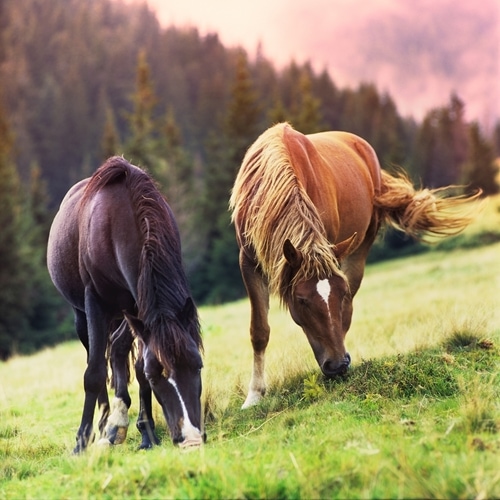In the past few decades, obesity has become a growing problem among a subset of horses. As a result, the animals face health risks such as laminitis, hyperinsulinemia as well as inhibited performance. So, what can horse owners do? A delicate balance must be struck between getting weight down while still giving adequate nutrition. Before implementing any changes, be sure to speak with your vet.
Similar to the weight-loss battle in humans, the culprits behind this gain remain overeating and lack of exercise.
“Obesity, over the past decade, has become a major health concern in horses,” Dr. Scott Pleasant, an associate professor in DLACS and diplomate in the American College of Veterinary Surgeons, said in a press release. “This is primarily because of its association with problems such as insulin resistance and laminitis. We can see with increased nutrition and lack of exercise how these animals could drift toward being overweight.”
Thus, the two keys to combat this problem are increasing exercise and decreasing caloric intake.
Exercise
While many horses are left on pastures to eat, not enough have a set exercise regimen in place. Exercise is an essential part of horse care. Not only does it build muscles and reduce fat, it allows horse owners to bond with animals. Though the amount of exercise depends on a horse’s age, breed and type of performance. all horses should be exercised for at least 30 minutes to one hour, three to four times a week. If needed, you can ride your horse up to six times a day, but avoid the same workout on the seventh day.
Note: Spreading out exercise over several days is better than a single day of longer, intense exercise. For example, five shorter rides a week are better for your horse than one long ride per week.
Caloric intake
Lowering a horse’s caloric intake tends to be a tricker matter. As horse owners are aware, a typical equine diet consists of concentrate and roughage. According to the Horse Channel, most horses – with the exception of young growing horses, mares in late pregnancy or early lactation, equines that are medically compromised and competitive athletes – do not need grain. Rather, the nutrients acquired from pastures are generally enough to sustain your mount. While this approach may encounter small speed bumps as the horse realizes its rations are being cut, it is considered effective.
Gradually instituting the shift is very important, so begin by slowly decreasing his grain portions instead of stopping them completely. Then cut down to graining once a day before decreasing the portion size to little more than a third of a cup, if anything at all.
Roughage is the second half of this equation. Providing bulk promotes gut health and motility. If a horse is on grassier pasture several times during the week, it will be useful to cut down this consumption over the course of a few days. To do this, limit its time on the pasture, or construct strip grazing, a grazing management system where you give horses a fresh allocation of pasture each day.








